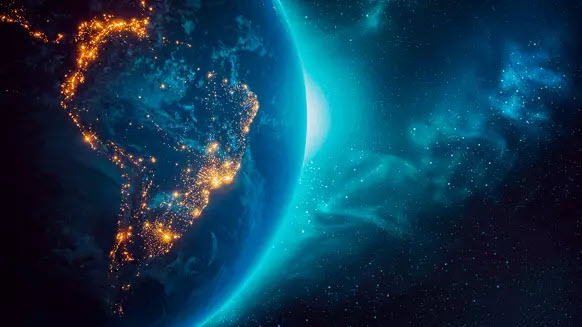
Susan Crockford
All predictions of disaster aside, in fact the polar bear is no closer to extinction than it was in 2005 as Arctic sea ice again steadfastly resists slipping past a catastrophic ‘tipping point’ — or the ‘death spiral’, as some chicken-littles continue to call it.
In fact, the summer sea ice trend has been pretty much flat since 2007, with ice covering about 42% less area than it had done in 1979, yet polar bears in many regions are doing better now than they were in 2005, especially in Davis Strait, the Barents and Chukchi Seas and the Canadian Arctic Archipelago.
No ‘tipping point for Arctic summer sea ice
The U.S. National Oceanic and Atmospheric Association (NOAA) identifies three periods in sea ice minimums: From 1979 to 1992, sea ice loss declined about 6% per decade. From 1993 to 2006, the decline accelerated to 13.3%. But from 2007 to 2020, the slope softened to just 4%. MongaBay News, 15 July 2021.
That flattish trend has only continued, as the graph below shows, modified from one published by the US Snow and Ice Data Center (NSIDC) in 2019 — see original here — showing the September average (not the minimum extent), so while we don’t have the figure yet for 2022 it is likely to be close to what it was in 2021:
Sea ice minimum at 2022
The NSIDC reported yesterday that Arctic sea ice reached its minimum extent on 19 September this year, covering 4.68mk2. The University of Bremen (see chart below) measured the extent at 4.87mk2 on this date but the slight difference is not really important: the shape and aerial extent of ice coverage at this date compared to 2005 are what I’m emphasizing here.
Sea ice minimum at 2005
The minimum extent of ice coverage was reached on 22 September in 2005 (U. Bremen):
Prediction based on 2005 sea ice conditions
Half of the predictions of future sea ice coverage (for 2050) were already exceeded by 2007 and the authors of the 2007 USGS conservation report on polar bears (Amstrup et al. 2007) stated: “This suggests our projections for the future status of polar bears may be conservative.” In other words, Amstrup and colleagues thought the future would probably be even worse than they predicted in their report: that even more than 2/3 of the world’s polar bears would be lost by 2050.
15 continuous years of 42% less summer sea ice
As the graph below from Stroeve and colleagues shows, the models of summer Arctic sea ice loss used to predict the dire future for polar bears were, by 2007, rapidly deviating from observations: it was indeed worse than they thought!
As it happened, the polar bear specialists were wrong (Crockford 2017, 2019): polar bears were more flexible and resilient than predicted and after 15 years of summer sea ice dropping to ‘catastrophic’ levels (about 42% less ice than in 1979 for at least 8 years out of 10), many subpopulations of the bears are better off than before. Davis Strait, Barents Sea and Chukchi Sea bears are doing very well: Barents Sea bears in particular are thriving despite by far the most sea ice loss of any Arctic region (e.g. Lippold et al. 2019; Peacock et al. 2013; Regehr et al. 2018; Rode et al. 2014). This was not what had been predicted.
Conclusion: Despite the Arctic warming four times as fast as the rest of the world with rising CO2 levels and about 42% less summer ice than there was in 1979, there is currently no ‘climate emergency’ for polar bears and the species is no closer to extinction than it was 15 years ago.
References
Amstrup, S.C., Marcot, B.G. & Douglas, D.C. 2007. Forecasting the rangewide status of polar bears at selected times in the 21st century. US Geological Survey. Reston, VA. Pdf here
Crockford, S.J. 2017. Testing the hypothesis that routine sea ice coverage of 3-5 mkm2 results in a greater than 30% decline in population size of polar bears (Ursus maritimus). PeerJ Preprints 19 January 2017. Doi: 10.7287/peerj.preprints.2737v1 Open access. https://peerj.com/preprints/2737/
Crockford, S.J. 2019. The Polar Bear Catastrophe That Never Happened. Global Warming Policy Foundation, London. Available in paperback and ebook formats.
Lippold, A., Bourgeon, S., Aars, J., Andersen, M., Polder, A., Lyche, J.L., Bytingsvik, J., Jenssen, B.M., Derocher, A.E., Welker, J.M. and Routti, H. 2019. Temporal trends of persistent organic pollutants in Barents Sea polar bears (Ursus maritimus) in relation to changes in feeding habits and body condition. Environmental Science and Technology 53(2):984-995.
Peacock, E., Taylor, M.K., Laake, J. & Stirling, I. 2013. Population ecology of polar bears in Davis Strait, Canada and Greenland. Journal of Wildlife Management 77:463–476.
Regehr, E.V., Hostetter, N.J., Wilson, R.R., Rode, K.D., St. Martin, M., Converse, S.J. 2018. Integrated population modeling provides the first empirical estimates of vital rates and abundance for polar bears in the Chukchi Sea. Scientific Reports 8 (1) DOI: 10.1038/s41598-018-34824-7 https://www.nature.com/articles/s41598-018-34824-7
Rode, K.D., Regehr, E.V., Douglas, D., Durner, G., Derocher, A.E., Thiemann, G.W., and Budge, S. 2014. Variation in the response of an Arctic top predator experiencing habitat loss: feeding and reproductive ecology of two polar bear populations. Global Change Biology 20(1):76-88. http://onlinelibrary.wiley.com/doi/10.1111/gcb.12339/abstract
Stroeve, J., Holland, M.M., Meier, W., Scambos, T. and Serreze, M. 2007. Arctic sea ice decline: Faster than forecast. Geophysical Research Letters 34:L09501. https://agupubs.onlinelibrary.wiley.com/doi/10.1029/2007GL029703
